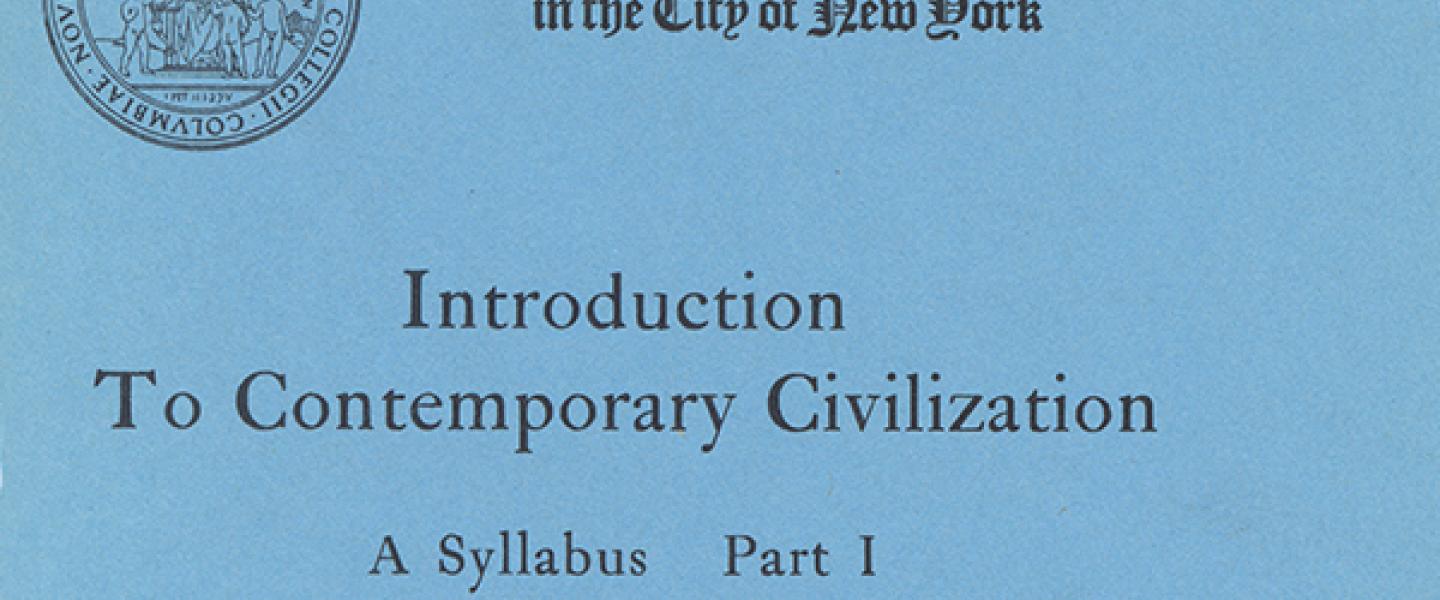
Did You Know? A History of the Core
Contemporary Civilization (CC) was introduced in 1919 in a revolutionary effort by Columbia College to cultivate the liberal arts education of its student body. While other colleges and even the University were moving towards the German model of pre-professional education, faculty and educators at the College were busy designing a course that urged students to consider themselves as individuals instrumental to thinking about “the insistent problems of the present.” In other words, the course was meant to have a civic focus and to develop “student citizens who can participate in national affairs with clear judgment and intelligence.” Faculty, in particular, were enthusiastic about a required course in the humanities and the reaffirmation of the College’s commitment to making men, rather than businessmen.
The College had already eliminated the traditional Latin requirements for Admissions, notable in that this would allow a wider range of applicants to consider attending Columbia College, rather than just those who had attended private schools or schools that presented the study of Latin language as a prerequisite for higher education.
Then, as now, CC was a full-year course, with the same instructor teaching both semesters. Each section met five times a week, from 9:00 to 10:00 in the morning. Classes were discussions, not lectures, built around the syllabus and other readings. This last point was crucial, for the faculty wanted students to engage themselves actively with the material through class discussion instead of passively through lectures.
Although it is common today to speak of CC as a "core" course, this way of speaking developed much later - largely because of the success of CC and its subsequent branches- Literature Humanities, Art Humanities and Music Humanities. The original experiment in contemporary civilization was not an attempt to impose a "core" of knowledge that all students had to master but rather, its impetus was to generate conversation, debate and reflection, rather than acquiescence to the presented ideas
Coordinating the teaching in Contemporary Civilization was also an altogether different challenge in that a single instructor was asked to take a section for the entire academic year and teach material outside of his area of professional expertise. Seeing life broadly was essential to the entire enterprise. The involvement of several departments, which continues today, reflected a deeply held belief in the interconnectedness of learning.
For those who became involved in planning and teaching CC, however, the limitations of each instructor by nature of the class’ broad material, were not so much a problem to be overcome as an essential ingredient of the course. CC was designed, after all, as an introduction to, not the final statement on, its subject. It was expected that students would gain knowledge of several disciplines, thus helping their choice of a particular discipline later on.
Works Cited
Cross, Timothy P.. "An Oasis of Order: The Core Curriculum at Columbia College.", Office of University Publications, Columbia University, 1995.

Please log in to comment.